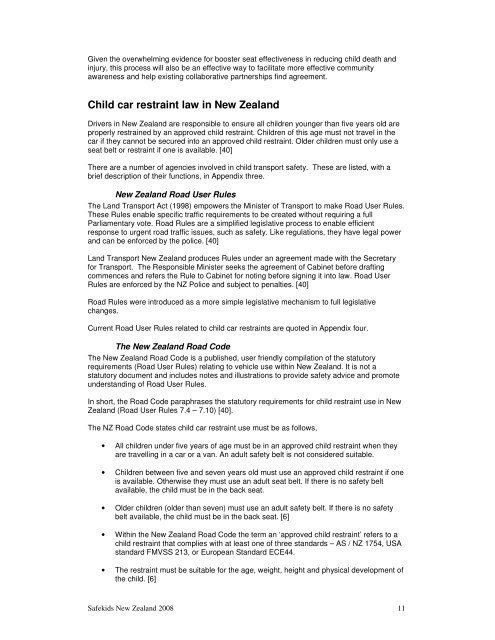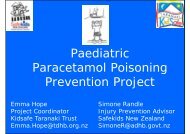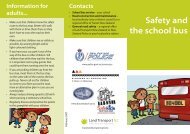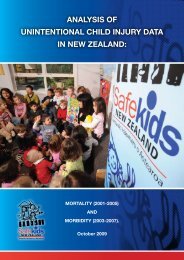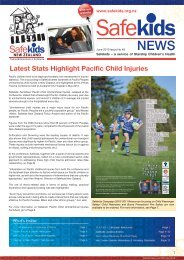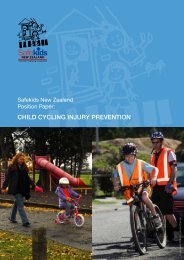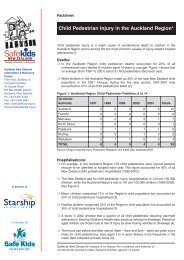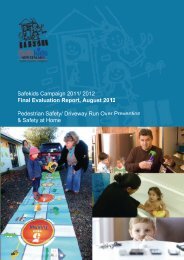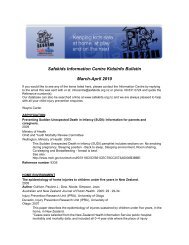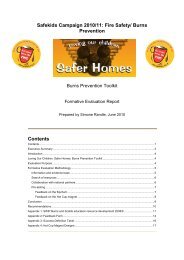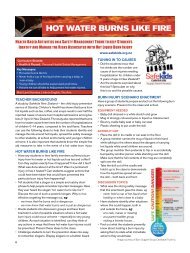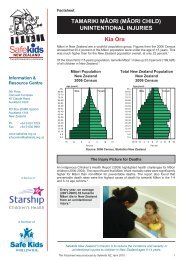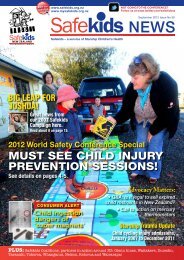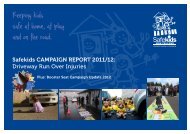Summary It's booster seat time for Kiwi kids - Safekids
Summary It's booster seat time for Kiwi kids - Safekids
Summary It's booster seat time for Kiwi kids - Safekids
Create successful ePaper yourself
Turn your PDF publications into a flip-book with our unique Google optimized e-Paper software.
Given the overwhelming evidence <strong>for</strong> <strong>booster</strong> <strong>seat</strong> effectiveness in reducing child death and<br />
injury, this process will also be an effective way to facilitate more effective community<br />
awareness and help existing collaborative partnerships find agreement.<br />
Child car restraint law in New Zealand<br />
Drivers in New Zealand are responsible to ensure all children younger than five years old are<br />
properly restrained by an approved child restraint. Children of this age must not travel in the<br />
car if they cannot be secured into an approved child restraint. Older children must only use a<br />
<strong>seat</strong> belt or restraint if one is available. [40]<br />
There are a number of agencies involved in child transport safety. These are listed, with a<br />
brief description of their functions, in Appendix three.<br />
New Zealand Road User Rules<br />
The Land Transport Act (1998) empowers the Minister of Transport to make Road User Rules.<br />
These Rules enable specific traffic requirements to be created without requiring a full<br />
Parliamentary vote. Road Rules are a simplified legislative process to enable efficient<br />
response to urgent road traffic issues, such as safety. Like regulations, they have legal power<br />
and can be en<strong>for</strong>ced by the police. [40]<br />
Land Transport New Zealand produces Rules under an agreement made with the Secretary<br />
<strong>for</strong> Transport. The Responsible Minister seeks the agreement of Cabinet be<strong>for</strong>e drafting<br />
commences and refers the Rule to Cabinet <strong>for</strong> noting be<strong>for</strong>e signing it into law. Road User<br />
Rules are en<strong>for</strong>ced by the NZ Police and subject to penalties. [40]<br />
Road Rules were introduced as a more simple legislative mechanism to full legislative<br />
changes.<br />
Current Road User Rules related to child car restraints are quoted in Appendix four.<br />
The New Zealand Road Code<br />
The New Zealand Road Code is a published, user friendly compilation of the statutory<br />
requirements (Road User Rules) relating to vehicle use within New Zealand. It is not a<br />
statutory document and includes notes and illustrations to provide safety advice and promote<br />
understanding of Road User Rules.<br />
In short, the Road Code paraphrases the statutory requirements <strong>for</strong> child restraint use in New<br />
Zealand (Road User Rules 7.4 – 7.10) [40].<br />
The NZ Road Code states child car restraint use must be as follows,<br />
• All children under five years of age must be in an approved child restraint when they<br />
are travelling in a car or a van. An adult safety belt is not considered suitable.<br />
• Children between five and seven years old must use an approved child restraint if one<br />
is available. Otherwise they must use an adult <strong>seat</strong> belt. If there is no safety belt<br />
available, the child must be in the back <strong>seat</strong>.<br />
• Older children (older than seven) must use an adult safety belt. If there is no safety<br />
belt available, the child must be in the back <strong>seat</strong>. [6]<br />
• Within the New Zealand Road Code the term an ‘approved child restraint’ refers to a<br />
child restraint that complies with at least one of three standards – AS / NZ 1754, USA<br />
standard FMVSS 213, or European Standard ECE44.<br />
• The restraint must be suitable <strong>for</strong> the age, weight, height and physical development of<br />
the child. [6]<br />
Safe<strong>kids</strong> New Zealand 2008 11


